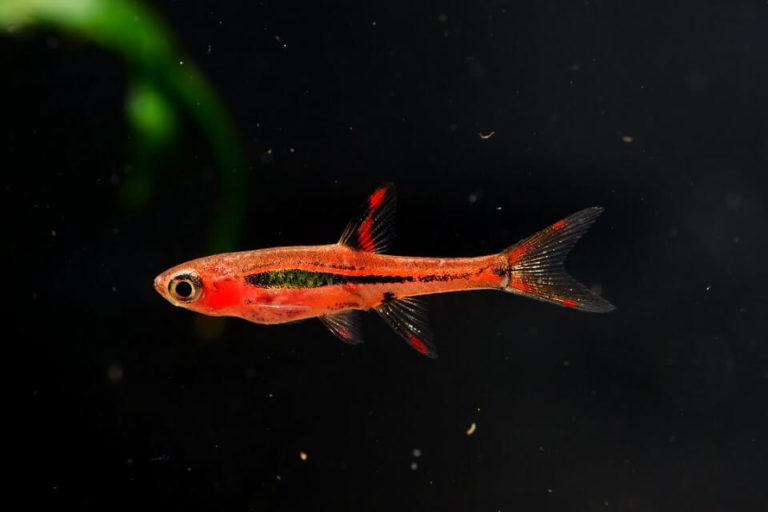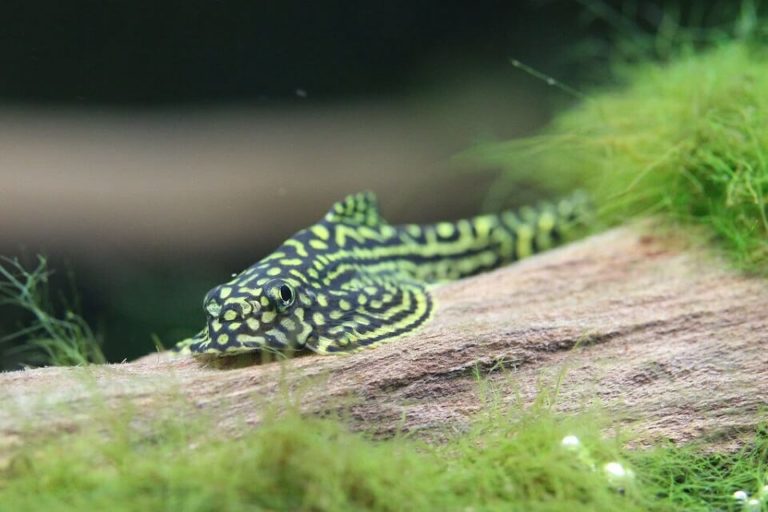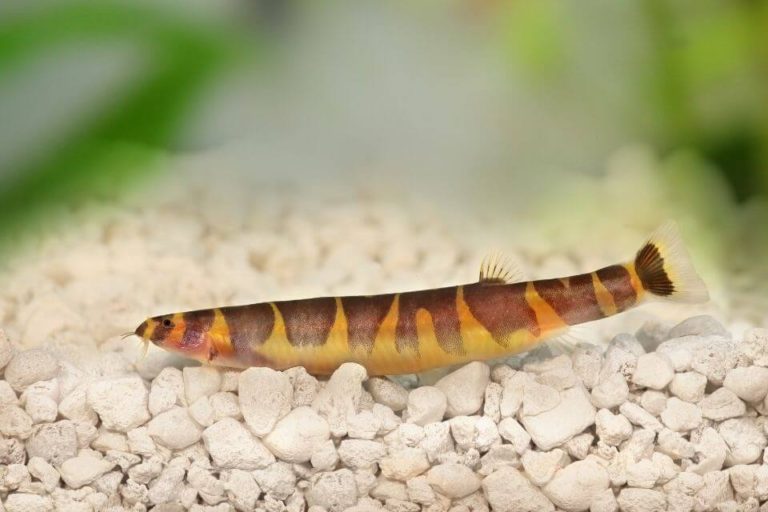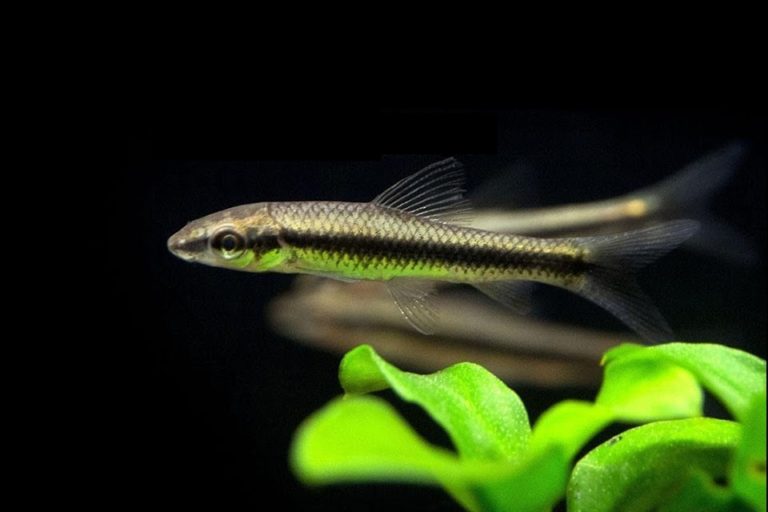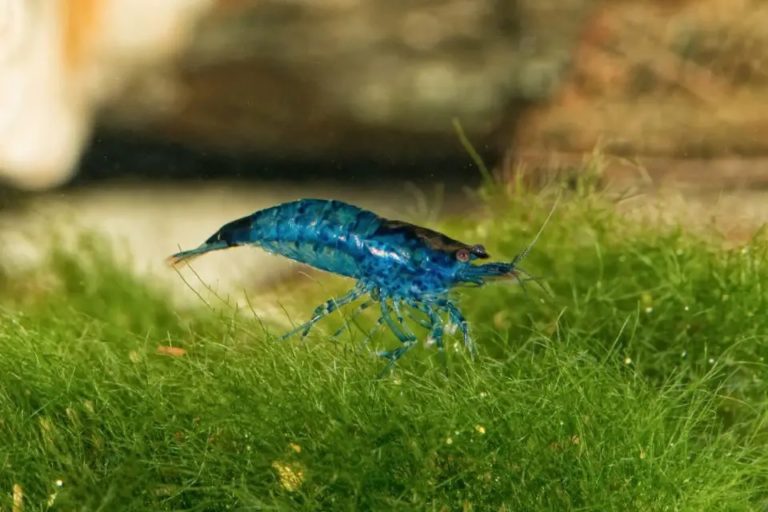Crystal Red Shrimp Care 101 – Diet, Breeding, Tank Mates and Tank Setup

The Crystal Red Shrimp is also known as Red Bee Shrimp considered a colored variant of “Bee Shrimp” That is commonly found in tropical water bodies.
They are freshwater Crustaceans considered algae and detritus-eating invertebrates. As with other invertebrates in water aquariums, they require good water quality with optimal parameters to thrive.
The Crystal Red Shrimp do not require saltwater like their marine relatives; instead, they are found naturally in freshwater bodies in countries that have tropical climates.
They can be kept with many different species of fish because they are relatively peaceful, unlike some other aquatic species.
Many people enjoy keeping these shrimps due to their bright pink coloration, making them ideal for “Aquascaping” purposes or even adding more décor to any tank.
Species Overview
The Crystal Red Shrimp is an invertebrate freshwater shrimp native to Southeast Asia, most notably Taiwan.
Their natural habitat is in slow-moving rivers and streams; their translucent bodies increase visibility while submerged in their natural environment. They are scientifically known as “Caridina cantonensis.”
They can often be confused with the Red Cherry Shrimp (Neocaridina davidi), which are commonly available in the aquarium trade.
The Crystal Red Shrimp’s pink coloration makes it very popular among aquarium hobbyists, especially when kept with other brightly colored fish species like Guppies. This type of shrimp has transparent bodies like all freshwater invertebrates.
ts opaque red coloration is only seen in adult specimens, making them easy to distinguish from younger shrimp that appear white.
Crystal Red Shrimp Size
The average size of a fully-grown Crystal Red Shrimp is between 1 to 1.5 inches (2 to 4 centimeters). They grow up more in size in their natural habitats because they have more freedom and nutrition than they can consume from nature.
Females are usually slightly larger with a stouter build than males, more minor, and slenderer in shape.
Crystal Red Shrimp Lifespan
Their life span in a captivity environment is usually around 18 months. But some have been known to live for up to 24 months when properly cared for. In the wild, they have a lifespan of little more than 18 months.
Behavior & Temperament
Crystal Red Shrimp are peaceful crustaceans that get along well with most other shrimp species; however, they should not be kept with larger fish or crustaceans that could eat them since they’re tiny and relatively defenseless against predators.
These invertebrates are nocturnal by nature, so their activity level increases at night while the rest of the tank mates sleep. This gives them time to feed without being picked on by faster-moving fish.
These shrimp species are also very peaceful creatures, but with their small size, they can become prey to larger fish and crustaceans if given a chance since they’re relatively defenseless.
They may not be kept with other shrimp species since they sometimes have different dietary needs and water parameters.
They’re also nocturnal animals by nature, so Crystal Red Shrimp can mostly be seen roaming about at night when the rest of the inhabitants sleep.
This gives them an excellent opportunity to feed without getting bullied or eaten by fish and other tank inhabitants whose activity is higher during the daytime.
Appearance and Colors
The Crystal Red Shrimp has a translucent pink body with red markings on its back and abdomen. From birth, they have white bodies, which gradually change color as they mature into adults.
Females are larger than males, but both have transparent torsos similar to other freshwater invertebrates like Ghost Shrimp.
They also feature eyes that change from black to red when they reach adulthood. The small shrimp also produce Carotenoids, although the exact reason why is unknown.
What makes them unique is their bright fluorescent coloration; this helps them stand out against their surroundings for hunting purposes or as a way to communicate with other shrimps.
Their claws also become red after they reach adulthood since this is the area where these shrimps store the Carotenoids. Crystal Red Shrimp have a slender body shape with tiny legs that allow them to crawl quickly across the bottom of their tank.
They also have symmetrical claws on their front and back legs for feeding purposes, as well as two pairs of antennae they use for the sense of touch.

They have three pairs of white whiskers underneath their bodies called Setae; these can be used as an additional means of defense if necessary since they’re often extended when Crystal Red Shrimp feel threatened.
These invertebrates also have a transparent shell-like exoskeleton, which is slightly flexible and not covered in rigid plates like other crustaceans.
This body composition itself well to the Crystal Red Shrimp’s natural habitat since it allows them to live in fast-moving waters
Crystal Red Shrimp Care
Crystal Red Shrimp can tolerate a wide range of water temperatures as long as it is within the average temperature for tropical fish.
Aquariums with lower temperatures may cause growth deformities on their legs and claws, which slowly turn red instead of a pinkish hue.
Although they are hardy and adaptable to different water conditions, these shrimp species require good water filtration because stagnant waters will gradually become toxic from the accumulation of ammonia from food wastes and decaying matter.
Crystal Red Shrimp must also be appropriately fed to ensure that they stay healthy. Its diet plays a significant role in maintaining an optimal water conditions to minimize stress on the shrimp and provide them with the nutrients they need to stay healthy.
– Crystal Red Shrimp Tank Size
Crystal Red Shrimp are relatively small invertebrates and may require a minimum tank size of 10 gallons for each shrimp. Keep in mind that they will breed in an established aquarium that has enough food sources and hiding places.
Although it is recommended to keep them in groups of at least six (6) or more because they are community creatures, some hobbyists have kept just one Crystal Red Shrimp in their tanks successfully for years without showing any signs of loneliness.
– Crystal Red Shrimp Tank Setup
Crystal Red Shrimp prefers planted tanks, but they will adapt to any aquarium with a sand or gravel substrate.
An ideal setup would include sand or fine smooth gravel substrate because it provides good water filtration and allows them to burrow where they can feel safe enough to molt their shells without being seen by predators.
You should have an under-gravel filter with smaller-sized aquariums because this type of filtration device may prevent shrimp from digging deep into the substrate for oxygen.
They are most active at night when they explore their habitat, looking for food sources and new areas to hide in during daytime hours.
It is also best to include plastic plants, rocks, driftwood, natural aquatic plants, caves, artificial terracotta pots made primarily for fish tanks, or even vertically stacked rocks to provide hiding places for the shrimp.
– Water Conditions and Parameters
These shrimp species require good water quality to stay healthy, and they will most likely perish in toxic waters with ammonia and nitrite levels for too long.
They can tolerate a wide range of pH levels in their environment, but they prefer slightly acidic or neutral conditions. To test the pH levels of your aquarium, use a reliable pH testing kit that provides accurate results within seconds.
It is also essential to check ammonia and nitrite levels every day. These pollutants may accumulate quickly when there are insufficient nutrients for your shrimp to feed on or when overcrowding occurs, leading to overfeeding.
- Water temperature: 70 to 78 °F (21 to 26 °C)
- Acidity levels of water: 5.5 to 7.5 pH
- Water hardness: Up to 4 dKH
– Suitable Plants
Crystal Red Shrimp sometimes feed on live plants, but some hobbyists still recommend adding live plants because they provide hiding places for shrimp while also increasing oxygen in your aquarium.
Silk or plastic plants may be used instead because some shrimp species such as Crystal Red Shrimps like plant matter. It has been observed that Aquascaping with certain silk plants can encourage shrimp to breed faster than usual.
When setting up your tank for these shrimp species you may try to replicate their natural habitat, hence you should think of planning live aquarium plants in the tank. The most suitable live aquarium plants would be:
– Possible Diseases and Prevention
Crystal Red Shrimp are extremely sensitive to poor water conditions, and they can get sick or die if there is not enough filtration in your aquarium. They may also contract diseases like ICH, which shows symptoms of white spots all over their bodies.
If you suspect that one of your shrimp has contracted this disease, the best remedy would be to quarantine them immediately while increasing vital nutrient levels like calcium and vitamins in their diet.
Crystal Red Shrimp carry various types of parasites on their shells which usually come with them when you purchase a new shrimp, but these creatures usually do not harm humans unless they get inside the mouth or throat.
Overfeeding is a common mistake made by many new hobbyists. These creatures require very little food, and overfeeding leads to water quality issues such as ammonia and nitrite poisoning, which can be fatal.
The best way to prevent Crystal Red Shrimp from contracting diseases is to ensure clean and well-filtered water conditions, add stress-reducing chemicals, if necessary, avoid overcrowding, and provide them with a proper diet.
Perform regular partial water changes at least once a week. The Crystal Red Shrimp requires to be taken care of to avoid disease and infections.
– Diet and Feeding
Crystal Red Shrimp eat primarily small bits of plant matter, algae, and meaty foods that sink to the bottom of their tank.
Look for sinking pellets or flakes made explicitly for bottom-dwelling invertebrates as these contain all the necessary nutrients such as calcium and iodine, which promote mounting and shell development.
You can supplement their diet with other types of food, such as blanched vegetables like spinach or zucchini. Specific frozen preparations for fish may also be suitable if your Crystal Red Shrimp don’t seem interested in flake food.
Just make sure to thaw out frozen foods before giving them to your shrimp.
Gender Differences
Crystal Red Shrimp are pretty easy to identify because they have salient characteristics which distinguish them from other shrimp species. One of the most apparent differences in their color will vary depending on the gender of the Crystal Red Shrimp.
Male – Their body is usually more brightly colored than females and also have more precise patterns. They also tend to grow more extensively compared to females of the same age.
Females appear plainer than males with less striking colors and patterns, but they can be identified by their gravid spot, a reddish-orange circular mark located right behind their head.
This spot will get brighter when she’s carrying eggs or about to molt her shell to release her eggs.
Crystal Red Shrimp Breeding
The gestation period lasts about 6 to 7 weeks depending on the water temperature, so it takes around five months before signs of parenthood become noticeable.
The female will usually carry around a few hundred eggs within her swimmerets, where they’ll stay until they’re born. Once the babies are free swimming, remove them from their tank because parents eat their offspring if given a chance.
Crystal Red Shrimp Tank Mates
Caring for Crystal Red Shrimp is relatively easy, with most fish and crustaceans being suitable aquarium tank mates; however, care should be taken when placing them in a smaller tank since overcrowding can considerably reduce water quality.
You need to pay attention while choosing what kind of fish or crustaceans you’re going to keep with your Crystal Red Shrimp because some may see them as food and will pick on them.
Some examples of suitable Crystal Red Shrimp tank mates include:
- Zebra Danio
- Galaxy Rasbora
- Neon Tetra
- Otocinclus Catfish
- Cherry Barb
- Guppy Fish
- Bamboo Shrimp
- Amano Shrimp
- Cherry Shrimp
- Platy Fish
Origin and Distribution
The Crystal Red Shrimp originates from South-East Asia, more specifically in Taiwan. They are found throughout the region in most clear-water rivers and streams, where they reside on the leaves of plants near the bottom.
Their natural habitat is subject to seasonal fluctuations in temperature, so these shrimps can easily adjust when kept in an aquarium with proper care.
The species has only been available since the late 1990s when they were exported as feeder fish; shortly after, their availability increased to successful breeding programs in captivity.
The Crystal Red Shrimp is considered one of the most popular shrimp species in home aquariums.
Frequently Asked Questions
Are Crystal Red Shrimps Hard to Care For?
Crystal Red Shrimp care is relatively easy compared to keeping other freshwater invertebrates, and they’re also very peaceful towards other tank inhabitants.
You need to watch for sure signs of stress, such as damage to the shell, which can indicate that another fish or crustacean is bullying your invertebrate.
Are Crystal Red Shrimp Aggressive?
Crystal Red Shrimp can sometimes be aggressive toward other invertebrates, especially if the latter resembles a small fish or crustacean. But they are usually very peaceful and hide whenever any larger tank inhabitants get too close.
How Often Do Crystal Red Shrimp Breed?
Since crystal red shrimp are considered a non-aggressive species, their breeding process is relatively easy.
You should provide them with ideal conditions that trigger and speed up this process, like clean and well-filtered water at around 78-80 °F (26–27 °C).
Once mating occurs, it usually lasts for a few minutes, and the female shrimp will be carrying around fertilized eggs within her swimmerets until they’re born about 7-8 weeks later.
Will Crystal Red Shrimp Breed with Cherry Shrimp?
Cherry shrimp are known to breed occasionally with Crystal Red Shrimp, but hybrids aren’t very common.
That is why you should only do it if you want a challenge or have a lot of time on your hands since wild hybrids can be unpredictable in terms of coloration and markings.
Wild hybrids tend to grow more slowly than either parent species, so there’s no real benefit for hobbyists who want something pretty.
Do Crystal Red Shrimp Need a Heater?
Crystal Red Shrimp care doesn’t revolve around setting up elaborate aquarium setups. As long as you keep the water within the correct parameters, which should be above 70 °F or 21 °C, they’ll do just fine without a heater.
Some hobbyists have reported that their invertebrates spend a lot of time in colder parts of the tank. This is typical behavior among Crystal Red Shrimps if they feel threatened by other inhabitants.
Where Is Crystal Red Shrimp for Sale?
These invertebrates are becoming increasingly popular, so it’s not too hard to find them from specialized online shops or even your local fish store.
Ensure that the dealer isn’t selling wild-caught specimens since these haven’t been bred in a controlled environment and are often very sensitive to water parameters.
If possible, pick specimens that have been captive-bred as they’re hardier and better acclimated to aquarium life which will make Crystal Red Shrimp care much easier for you.
How Much Does A Crystal Red Shrimp Cost?
The price of a crystal red shrimp varies according to its size because larger specimens cost more than smaller ones.
However, prices tend not to exceed $5 to 15 per specimen, which is relatively cheap compared to other freshwater invertebrates sold as pets.
Seek out captive-bred specimens whenever possible because this grows faster and adapts so that you won’t need extensive Crystal Red Shrimp care guidelines.
Final Thoughts
Crystal Red Shrimp are some of the easiest freshwater invertebrates to keep in a community aquarium. They are very peaceful towards fish and crustaceans while being hardy enough to adapt even if water parameters aren’t always perfect for them.
Their low price makes them an ideal choice for hobbyists who aren’t quite ready to take on more challenging species in terms of their care requirements.
It would be best to avoid wild-caught specimens because these are usually very sensitive and need extensive Crystal Red Shrimp care tips to adjust to aquarium life without any problems.
This article has all that you need to know for you to enjoy keeping Crystal red shrimp.


